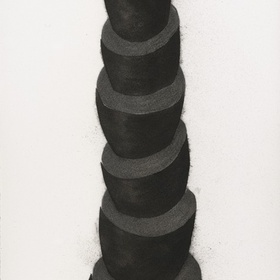Matt illustration
in the 1950s illustration was seen everywhere, Books, Magazines, Billboards etc
America advertised using media tools. Illustration became a more common use for ideas.
The salary went up by 50%
Lots of new brands and product was provided.
everything began to expand for restaurants, outdoor cinemas etc
when the america came in to the big boom illustration was used in ,movie posters.
illustration was also so used for necessary purposes such as news desks and newspapers.
illustration began to generate more for more of a target audience for children
Dr Seuss was used during the ww2 for political drawing he then re appeared after the war and was used in children's books.
Kim fashion
Small waists big skirts bright colours, patterns
wondering waistlines paris spring collection
1953 short sleek
clothes were kept simple due to the rationing during the war
war ended and rise ready wear fashion quality cloth and manufacturing.
Elicia architect
artist LE Corbusier roar concrete
Basil Spense
Brutalst
tried to change the way they built cities.
schools, shops
construction site on site as they thought it would be cheaper but wasn't
bad at keeping heat within the walls.
sheffield the slum
Jordan animation
1940-60 a list movies became to come out
disney
looney tunes
cinderella 1950
alice in wonderland 1951
lady and the tramp 1955
peter pan 1953
1958 warner brothers brought out knight knight bugs
looney tunes became more regular example tome and jerry
casper
road runner
woody woodpecker
racism was also a huge issue.
emma abstract expressionism artists
Jackson pollok
dripping paint, uses brushes and sticks
became a regionalistic style which is an american modern art movement they shunned city life where they wanted to change how city look s so countrysides
also moved to technical advances.
has his most famous paintings in 1946-1951
diego rivera
Mark tobey
poetry white writing, calligraphy which is visual art writing uses braod tip instruments or brushes
lee kranser
uses collage and oil paints
williem de kooning
robert motherwell
barnett newman
feedback- very well she wasn't reading of the board she seemed to know what she was talking about
she did the right info for a presentation not too much not too little could of looked into more artists
good eye contact more research into the other artists more as she mainly did about jackson pollok.
stacey costume and special fx
creature from the black lagoon
ben chapman actor
underwater photography
costume made of foam rubber and latex
simply made not heavy
the actors held there breaths no breathing devices
makeup artists
Bud westmore
jack kevan
chris muller
feedback
little quiet, she could of researched more into the makeup artists she found and then expand from there, so look into what there style is what else have they done what materials do they like to use ext.
Mel illustration
popilar for advertising
used in propaganda all though no one took too much notice no one wanted to be reminded of the cold war.
happy bright colours
positive attitude
women are over advertised
care free
drive through cinemas
dr seuss books fresh and easy on the eyes came from propaganda and turned into happy children books.
gyo fujikawa
worked at disney studios
oliver hurts
political and fashion illustration
feedback plenty of info interesting and enjoyable presentation good eye contact and humorous..
Beacky media/recording
people were unsure what to think at first.
was used for fashion, films, advertising, concerts, gigs, tv shows
posed atmosphere people were seen as happy but it was just for a pretty picture.
sexixm was an issue women were seen as they didn't know what they were doing with the cooking and cleaning men made them look stupid, and treated them like a piece of meat.
feedback
she sounded like she was confident in what she was saying she didn't read of the board but she lacked eye contact with the rest of the group.










